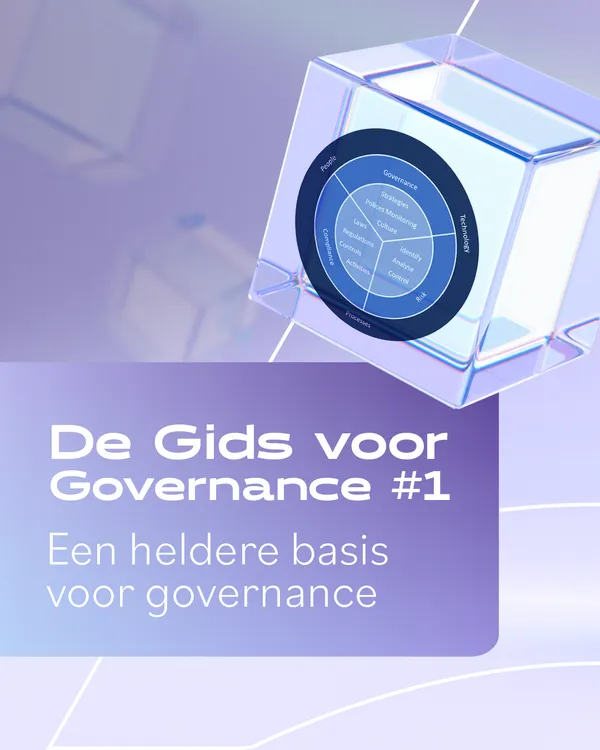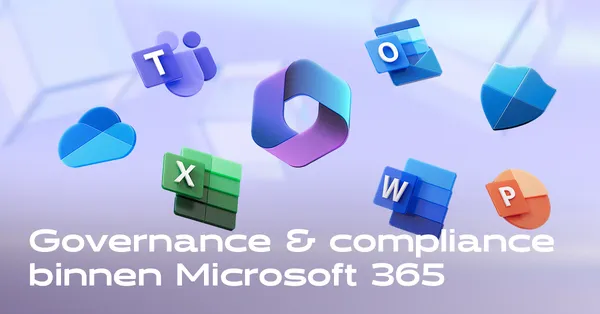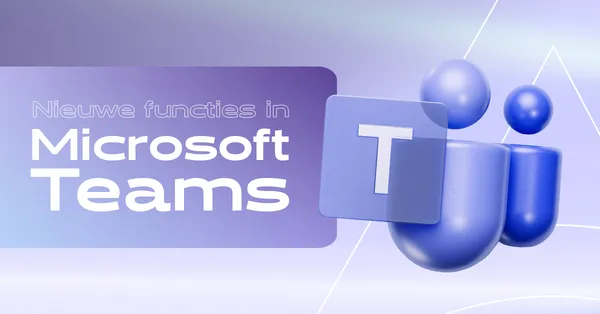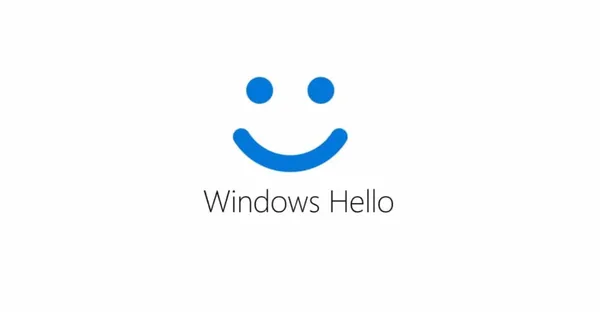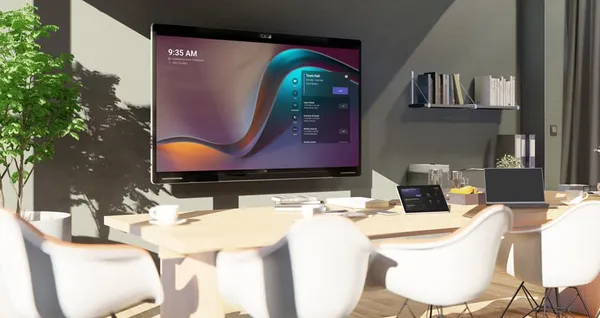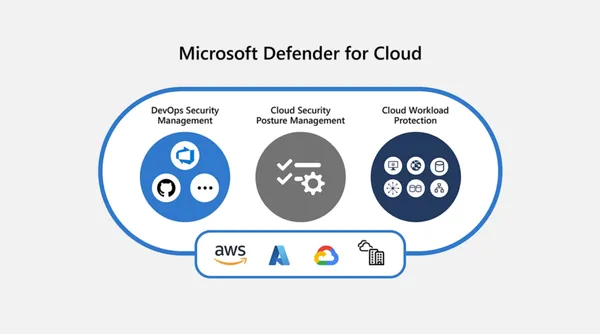
Knowledge base
July 01, 2021
Hybrid work arrangement with Microsoft Teams: the future of Office
The Covid-19 pandemic and subsequent restrictions have pushed millions of people to work remotely, disrupting traditional ways of working. And with restrictions being lifted and people returning to their workplaces, many organizations have decided to maintain some flexibility in the way they work and opt for a hybrid work arrangement.
Hybrid work brings both benefits and challenges. Organizations need powerful solutions that enable them to connect their employees and work together seamlessly. In this article, we describe how Microsoft Teams supports cross-border working.
What is hybrid work?
Hybrid work is a mixed model that allows for a degree of flexibility in where and when people work. This work arrangement benefits those employees who prefer to combine working from home with office work.
After a rapid shift to remote working, people now expect their employers to offer more freedom in choosing where to work. According to an Accenture report, 83% of employees prefer a hybrid work model.
It is now considered an important workplace productivity strategy that will help attract and retain talent. A Gartner report found that 82% of the leaders surveyed plan to work remotely some of the time.
Benefits of hybrid working
Freedom about where to work
Hybrid work arrangements allow people to strike a balance between remote and office work, taking advantage of the benefits of the two models. You can both connect with your team members if you choose to go to the office and balance your personal life when working remotely.
More autonomy – more initiative
Giving people more autonomy in the way they work is a way of showing that you trust them. As a result, your employees feel more motivated and encouraged to take initiative and prove their worth.
Save time and nerves Saving
Being able to go to the office just a few times a week can save your employees quite a bit of time. This is especially current for large cities where commutes often take more than an hour due to heavy traffic.
According to the study conducted by VitalityHealth in the UK, longer commutes have an impact on mental wellbeing, with workers who travel longer being 33% more likely to suffer from depression and 12% more likely to report work-related stress.
work life balance
One of the main advantages of hybrid working is that you can better balance your personal and work life. No more staying in the office late unless necessary. Being able to work from home allows people to spend more time with their closed, even with tight deadlines.
Wider talent pool
Flexibility in where and when your employees work allows you to expand your talent pool, promoting inclusivity in the workplace. Hybrid work thus opens the door to hiring underrepresented groups who would otherwise have no means or desire to take up the job.
Job satisfaction
Multiple benefits that hybrid work provides to employees make them value their jobs more, increasing job satisfaction and employee retention.
Challenges of Hybrid Work
At the same time, the way people work together to get work done in a hybrid model requires organizations to restructure their structure and adopt a new management style. There are some challenges that need to be addressed in order to take full advantage of hybrid work arrangements.
Maintain work culture
A Gartner survey shows that 30% of business leaders are concerned about preserving corporate culture. Ensuring uniformity of the remote and in-office employee experience is a challenging task. Organizations are actively adopting digital solutions that encourage internal communication and can help foster the work culture among employees who work remotely.
Guiding teams remotely
Maintaining individual and team productivity has become a key focus of modern hybrid remote work. Working outside the office makes supervising and controlling employees more challenging, forcing managers to resort to other ways to monitor the wellbeing of their team.
Disconnection
Working less in the office means less chance of interacting with colleagues and managers. Without the occasional coffee break and meetings in the hallway, it’s hard to keep in touch with colleagues, let alone network.
Digital overload
Digital exhaustion is one of the major consequences of the move to virtual collaboration. In just one year, the number of Teams meetings has more than doubled and continues to grow. The pressure to keep up takes its toll on employee wellbeing and productivity.
Onboarding
Those first few months in the organization are the most challenging for a new hire. Especially if they have to be on board remotely. Even if they occasionally go to the office, the overall onboarding experience has changed now that the collaboration is entirely online.
Ongoing communication
Microsoft Teams makes it possible to unite people under the same ‘roof’ of collaboration. You can bring the same team members from different departments, business units, and even external players to the same team members, making sure everyone is on the same page, even without being physically together.
To support both synchronous and asynchronous, Microsoft New Fluid Components added. Soon, Teams users will be able to pin a message to a chat for quick access to important information. They can also reply to a specific message in a chat to maintain context within a conversation.
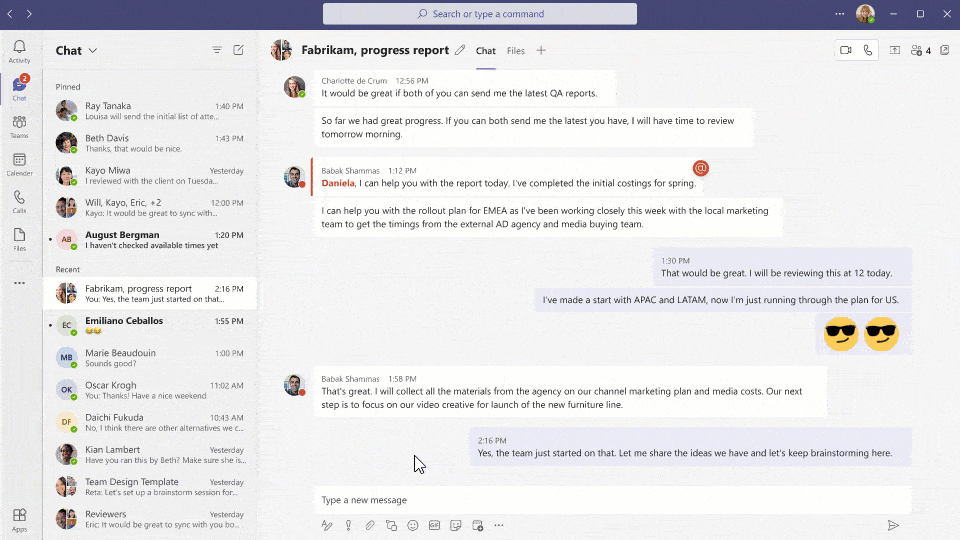
Plus, the Microsoft Teams mobile app lets you stay in touch with your team members on the go, giving you even more flexibility in where and when you work.
Interactive Meetings
Microsoft has enhanced its conferencing capabilities with many new interactive features that help make the meeting experience more realistic, powerful, and engaging.
To bridge the communication gap caused by the lack of cues in virtual meetings, raise your hand to let everyone know you want to speak, send a live response, enable live captioning, use a digital whiteboard, or enable a fun wallpaper .
Plus, you can now make your pitches and presentations even more impressive with new video layouts that show the speaker’s video stream before the presentation. It almost looks like a weatherman appearing on the news.
Over the course of 2021, Microsoft will roll out Teams Rooms, allowing everyone to sit at the conference table, wherever they are. The video gallery moves to the bottom of the screen, allowing remote participants to come face-to-face with those in the room. Meeting context such as chat, notes, and calendar are also displayed along the video stream, allowing anyone to contribute, comment, and comment at any time.

Live collaboration
In hybrid work, it is important to keep employees aligned and to allow everyone involved to participate and contribute equally. New PowerPoint Live features help create a space for everyone to collaborate and contribute during a meeting. For example, you can enable slide translation to see the presentation in your own language. You can also annotate your PowerPoint with ink or use a laser pointer to highlight important points as you present.

In addition, your employees can collaborate on files on documents directly in the Teams environment. They can edit, leave comments, tag specific people, and track changes made by others.
Plus, you can integrate native and third-party apps into Teams by adding them as tabs. This way you can have focused discussions with your colleagues about projects, deals, accounts and tasks from your CRMs and project management apps, directly in the Teams environment.
Wellbeing
Digital exhaustion, increased pressure and difficulty disconnecting from work while working from home create stress and can lead to burnout. To help people manage stress better, you can use the Viva Insights app in Teams. It offers its users guided meditations and mindful exercises to disconnect from work and relax.
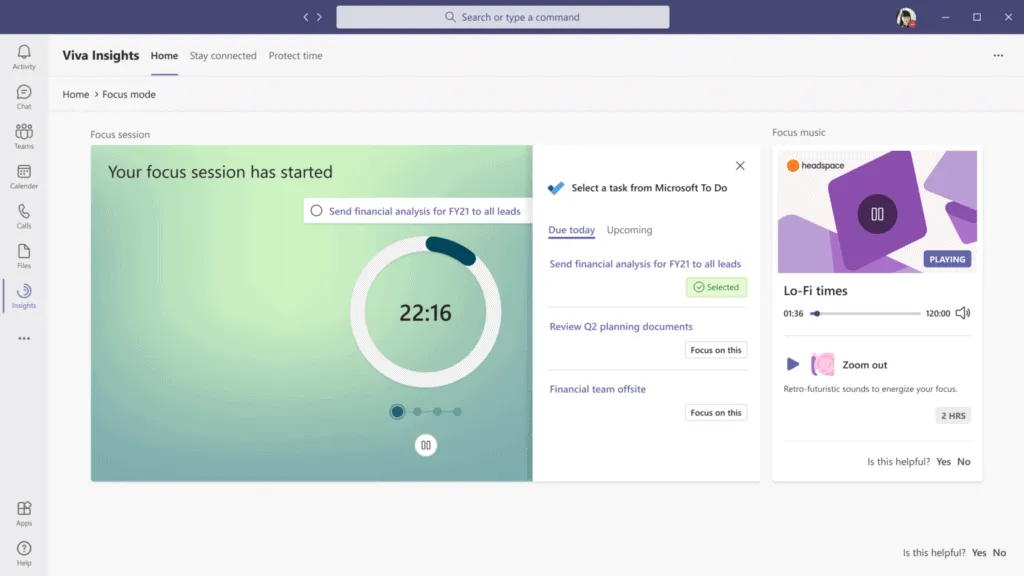
You can also schedule focus time for uninterrupted work without distracting notifications. In addition, Viva Insight offers the ability to set quiet hours and quiet days to mute mobile notifications outside office hours.
The app also provides insights for managers and leaders to monitor employee wellbeing, out-of-hours work, meeting overload, or under-focus work. When action is needed, it provides personalized recommendations to help people build better work habits.
Hybrid Work Collaboration Templates Capabilities
Many organizations, especially medium and large enterprises with thousands of employees, struggle with collaboration chaos, team sprawl, lack of control over shadow IT, and low employee engagement. These challenges are especially current in the hybrid work model where employees are split between office and remote work. To address these issues, organizations need complementary solutions to Microsoft Teams that enable strong governance policies and enable users to work more efficiently.
Microsoft Teams collaboration templates do just that
Workspaces built to improve the way people work
Collaboration templates allow you to connect employees in the hybrid work arrangement, especially with those who are not members of their direct teams.
For certain work processes, such as key account management, you need extensive teams of up to 100 employees working on an account. These teams normally include product developers, technical support staff, customer success representatives, marketers, sales managers, etc. Traditionally, they all worked in the same physical space, even if they were in different departments. In hybrid working, however, you have to bring together and organize the work of dozens of people from different fields.
With Microsoft Teams collaboration templates, you can bring the right people for any collaboration process together under one roof, provide them with the right tools for seamless teamwork, and organize their workspace that enables more efficient collaboration.
Easy-to-use team creation experience
Adopting new technology at the organizational level is never easy. Especially if you have to do it remotely. Some people may have trouble learning all the capabilities of Microsoft Teams and need extra help creating and organizing new teams.
Collaboration templates make the whole experience much easier for end users, allowing them to create teams with just a few clicks. They don’t have to ping the IT department to get approval and risk missing important content or not adding some colleagues to the team. Creating teams becomes a simple and at the same time highly structured and controlled process. Therefore, it can help increase Microsoft Teams buy-in in your organization.

Better content management
With collaboration templates, you only need to add all the important content once. Then it will be automatically copied to newly created teams. That includes channels, documents, and other files, folders, and tabs.
In addition, you can only create a SharePoint for the teams of a specific template. This allows your users to keep all the data related to a particular collaboration process in the same document library and better manage their file system.
Source: salestim
Want to know more?
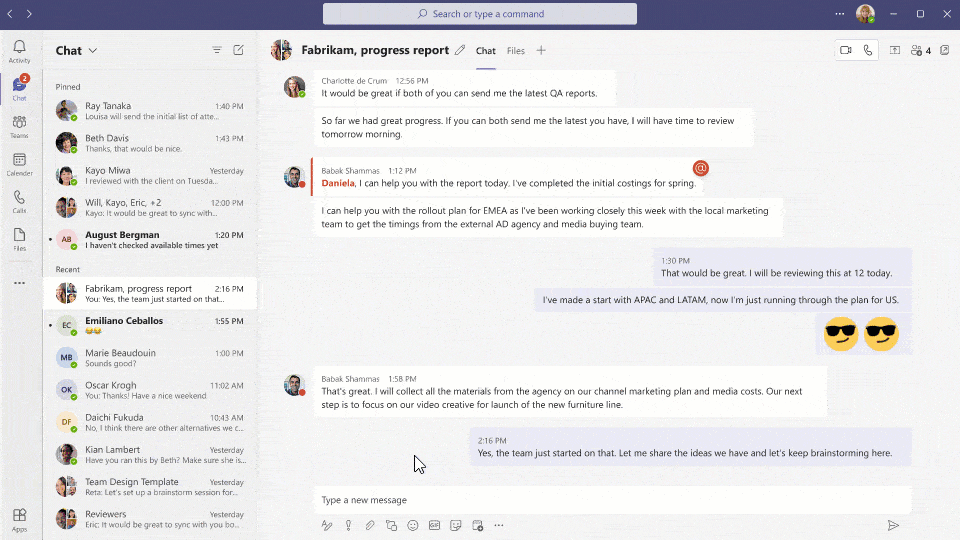
Related
blogs
Tech Updates: Microsoft 365, Azure, Cybersecurity & AI – Weekly in Your Mailbox.

